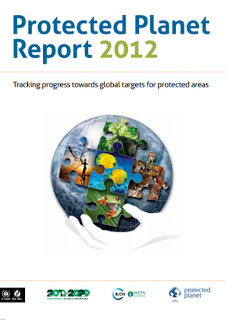
The United Nations Environment Programme’s World Conservation Monitoring Center (UNEP-WCMC) has released its first ever “Protected Planet Report.” The report seeks to track global progress towards achieving Target 11 of the Convention on Biological Diversity’s (CBD) Aichi Biodiversity Targets. The report was compiled by UNEP-WCMC, the International Union for Conservation of Nature’s World Commission on Protected Areas and a wide range of organisations that build on the work of the CBD-mandated Biodiversity Indicators Partnership.
The report, which will now be released semi-annually, notes that while the protected area network is growing towards achieving targets in terms of area covered, many protected areas do not offer adequate protection for endangered species. The report also reveals that protected area management is changing dramatically around the world. According to Nature’s write up of the report, “in 1990, just 14% of protected areas allowed hunting and other sustainable uses of natural resources, but today that number has risen to 32%. At the same time, the amount of area managed exclusively by governments has declined from 96% to 77%, a trend reflecting the rise of community-based conservation and co-management schemes with indigenous peoples.”
Nature’s story on the report can be accessed here. IUCN’s description of the report can be found here. The report can be downloaded here.
